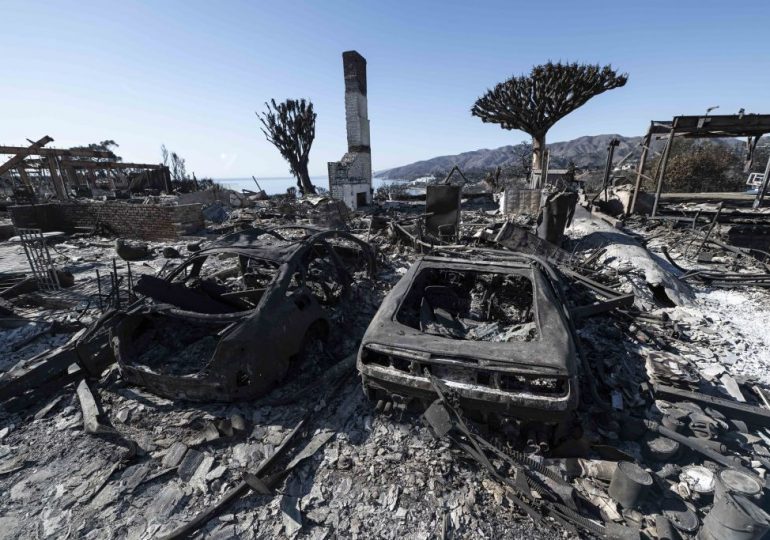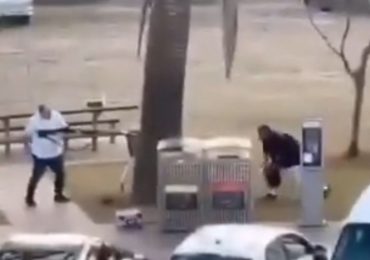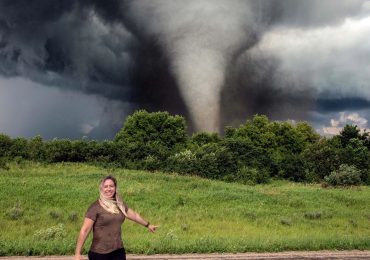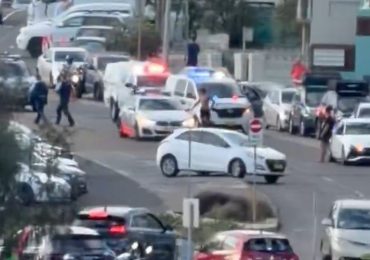Thousands of personnel—firefighters, first responders, and the National Guard—have turned their attention towards stifling the catastrophic Los Angeles wildfires, some of the worst California has ever seen.
The Palisades Fire and Eaton Fire, which continue to burn since they were first detected ten days ago, have destroyed 12,000 structures, killing at least 27 people, and burning down nearly 40,000 acres of land (when including damage from the smaller, now extinguished fires). The fires are the second and fourth most destructive in the state’s history.
[time-brightcove not-tgx=”true”]
While experts say the devastating 2018 Camp Fire in California is slightly similar to the Los Angeles fires in terms of destruction, the Los Angeles fires distinguish themselves from others due to the rapid rate of spread and the fact that it is an urban conflagration—referring to a fire that spreads from structure to structure, with buildings and homes acting like the primary source of fuel instead of trees.
“Under the wind conditions, embers are transported upwards of a mile from the fire itself, raining down in the thousands and thousands on homes and neighborhoods, igniting anything that is flammable,” says Daniel Berlant, California state marshal. The 2020 August Complex Fire in Northern California for instance, burned more than 1 million acres, but it only damaged 935 structures. The 2021 Dixie Fire, also in the North, had similar acre damage and harmed just over 1,3000 structures. To date, they are the two largest California wildfires, according to CalFire.
Both the Dixie and August Complex Fires happened during the regular wildfire season, which typically runs from the spring through fall, per the Western Fire Chiefs Association. But, things have changed in the past year as climate change has extended wildfires to a year-round threat, and fuels fires when they do happen. “In less than a decade, California has experienced its largest, its most damaging, its deadliest wildfires,” says Berlant. “Our dry matter and climate has always lent itself naturally to wildfires, but really, more recently, I’d say a confluence of issues has led to this immense wildfire crisis. A changing climate is one of those.” The most-recent fires certainly lended themselves to such rapid spread due to the lack of precipitation in Southern California and Santa Ana winds that measured more than 80 miles per hour.
The state has rolled out aid for firefighters in recent years. In 2024, CalFire received an additional $2 billion, an investment that boosted their budget up by 47% from 2018. Berlant says that aid has doubled the number of personnel working for Cal Fire. Agents have focused on three main areas: fire response, community preparedness, as well as forest restoration work. The Palisades and Eaton Fire stand at 31% and 65% contained as of Friday, respectively, though winds are supposed to pick up next week that could stifle containment.
U.S. Fire administrator Lori Moore-Merrell says that while the death count from the recent Los Angeles fires is still unclear, more lives could have been lost if officials weren’t already wary of the weather conditions that put them on alert. “We anticipated the Santa Ana winds, the other variables, like drought. So there was a good deal of anticipation that if we had an ignition, it was going to be bad,” she says. “That caused early evacuation warnings, and people listened. And that is why we are not yet seeing the fatality count go up astronomically, like we saw, for example, in the Paradise Fire, or the [2023] Lahaina Maui Fire.” (Paradise is a nickname for the 2018 Camp Fire.) Moore-Merrell admits, however, that there are lessons to be gleaned regarding the proper messaging mechanism for evacuation orders, and the actions that should be taken to avoid traffic jams such as the ones reported early on in the fires.
For now, state officials continue to replenish the budget needed to fight these fires. California Gov. Gavin Newsom called for an increase of $2.5 billion in state funding for emergency response efforts and recovery in Los Angeles on January 13. The money would help rebuild schools, and increase the preparedness against future threats, which firefighters see as necessary given the latest trends. The Federal Emergency Management Agency (FEMA) has rolled out some relief for impacted residents, issuing a $770 stipend for families to purchase essential items. Victims can apply for other forms of disaster assistance. They have also opened local assistance centers to aid those in most need. FEMA did not immediately respond to TIME’s request for comment.
Still, while California wildfires are a natural part of the landscape, the threat of urban conflagrations also extend past the state. Moore-Merrell says that this marks the third instance of an urban conflagration under the Biden Administration. The other two were the 2021 Marshall Fire in Colorado, which burnt more than 6,000 acres and 1,000 homes in Boulder County, and August 2023 Lahaina Fire in Maui, which took more than 100 lives and cost about $5.5 billion in damages. The Maui Wildfire was the fifth deadliest wildland fire in U.S. history, destroying neighborhoods and historic landmarks. “We are seeing a change in the baseline risk of wildfire across the nation,” she says.
Leave a comment








